That drafty corner by your bedroom window doesn’t have to stay bare anymore. While most houseplants throw a dramatic tantrum at the first sign of cooler temperatures, there’s an entire category of resilient beauties that actually thrive when the thermostat drops. You know that awkward hallway where the heating never quite reaches.
Or the sunroom that turns into an icebox come winter.These spaces are about to become your favorite green zones. Cold-tolerant indoor plants aren’t just survivors—they’re stunning additions that prove you don’t need tropical warmth to create an indoor jungle.
From the architectural elegance of snake plants to the lush cascades of English ivy, these tough specimens laugh in the face of temperature dips that would send their delicate cousins into permanent wilt mode. Ready to discover which plants will actually thank you for that cool bedroom or unheated office?
1. Cast Iron Plant (Aspidistra elatior)

This plant laughs at cold temperatures. It handles drops down to 32°F (0°C) without breaking a sweat. Most houseplants would give up, but not this one. It’s considered the most hardy indoor plant you can buy.
Here’s what makes it special. Cast iron plants grow slowly to about 2-3 feet tall. Their long, glossy green leaves look elegant in any room. They come from the forests of Japan and China, where they learned to survive tough conditions.
The best part? You can stick this plant anywhere. That spot where nothing else survives? Perfect. The aspidistra is foolproof and handles what other plants can’t. It thrives in the 50-80°F range but goes much colder when needed.
Care is simple. Use slightly acidic, well-draining soil. Let the soil dry halfway down before you water again. Don’t overthink it.
Light requirements? Almost none. Seriously, this plant tolerates just about any lighting situation. Bright corner or dark hallway—it doesn’t care.
If you’ve killed every plant you’ve owned, start here. This cold tolerant, low maintenance plant forgives mistakes. It’s the ultimate beginner plant for cold rooms.
2. ZZ Plant (Zamioculcas zamiifolia)
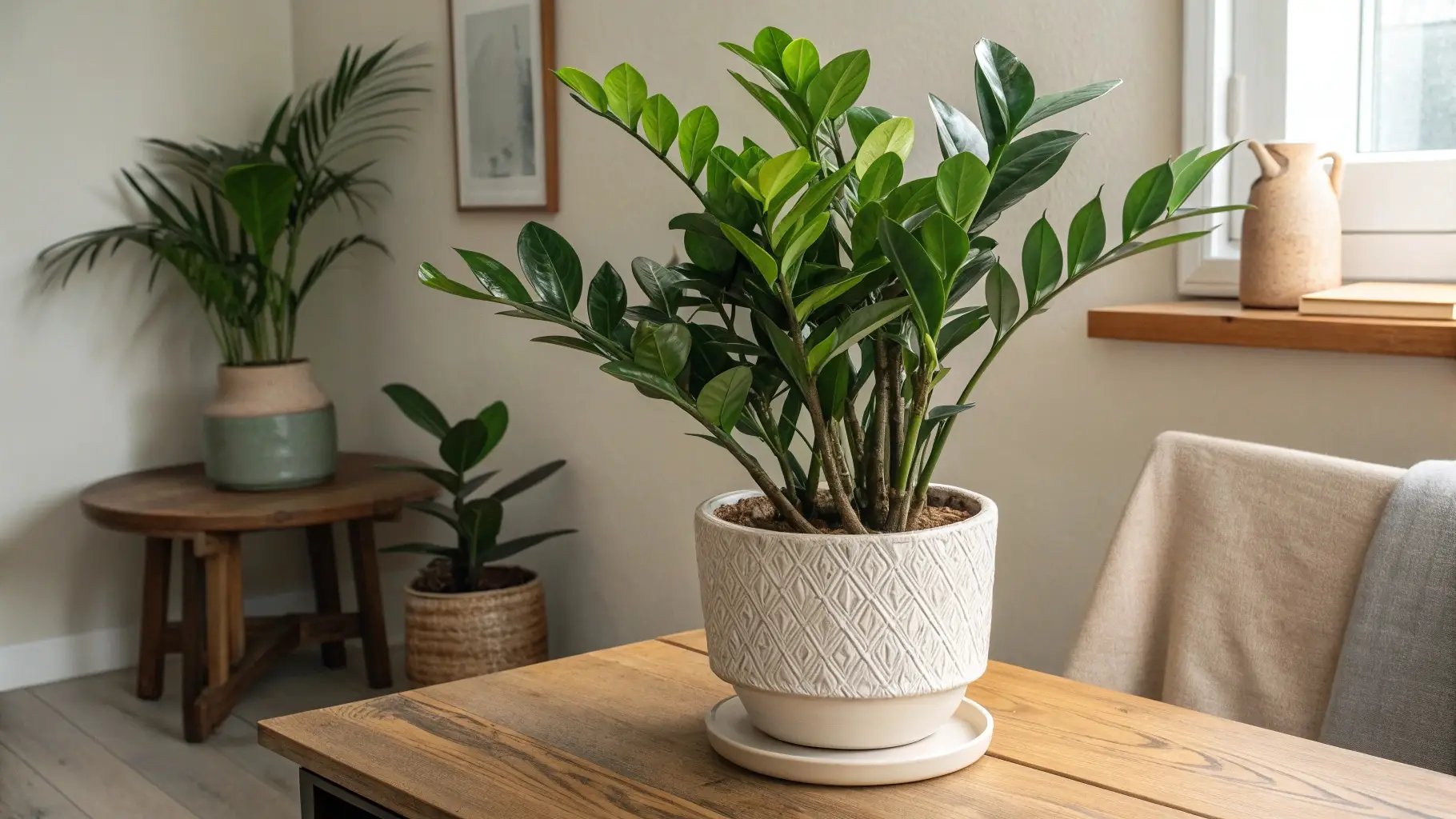
Houseplant expert Valeria Nyman puts it simply: “Hands down, the ZZ plant. It’s like the tortoise of houseplants. It’s slow, steady, and basically invincible.” That’s the kind of endorsement you can trust.
This plant handles cold better than most. It survives down to 45-50°F (7-10°C). It prefers temps above 60°F, but it won’t die on you if things get chilly. The ZZ comes from East Africa, where conditions can be harsh. It evolved to survive, and that shows.
Why is everyone buying these? The combination is unbeatable. Amazing style meets incredibly easy care. The glossy, architectural foliage makes a statement without demanding attention. Hardy houseplants don’t usually look this good.
Watering is minimal. Once a month in winter. That’s it. Forget about it and it’ll still be fine. This is a plant for busy people.
Light needs are flexible. Low light? Fine. Bright indirect light? Also fine. The ZZ adapts.
People love low maintenance, cold tolerant indoor plants that actually look modern. The ZZ checks every box. It’s trending because it works. No tricks, no special care, no drama. Just a good-looking plant that refuses to die.
3. Snake Plant (Sansevieria/Dracaena trifasciata)
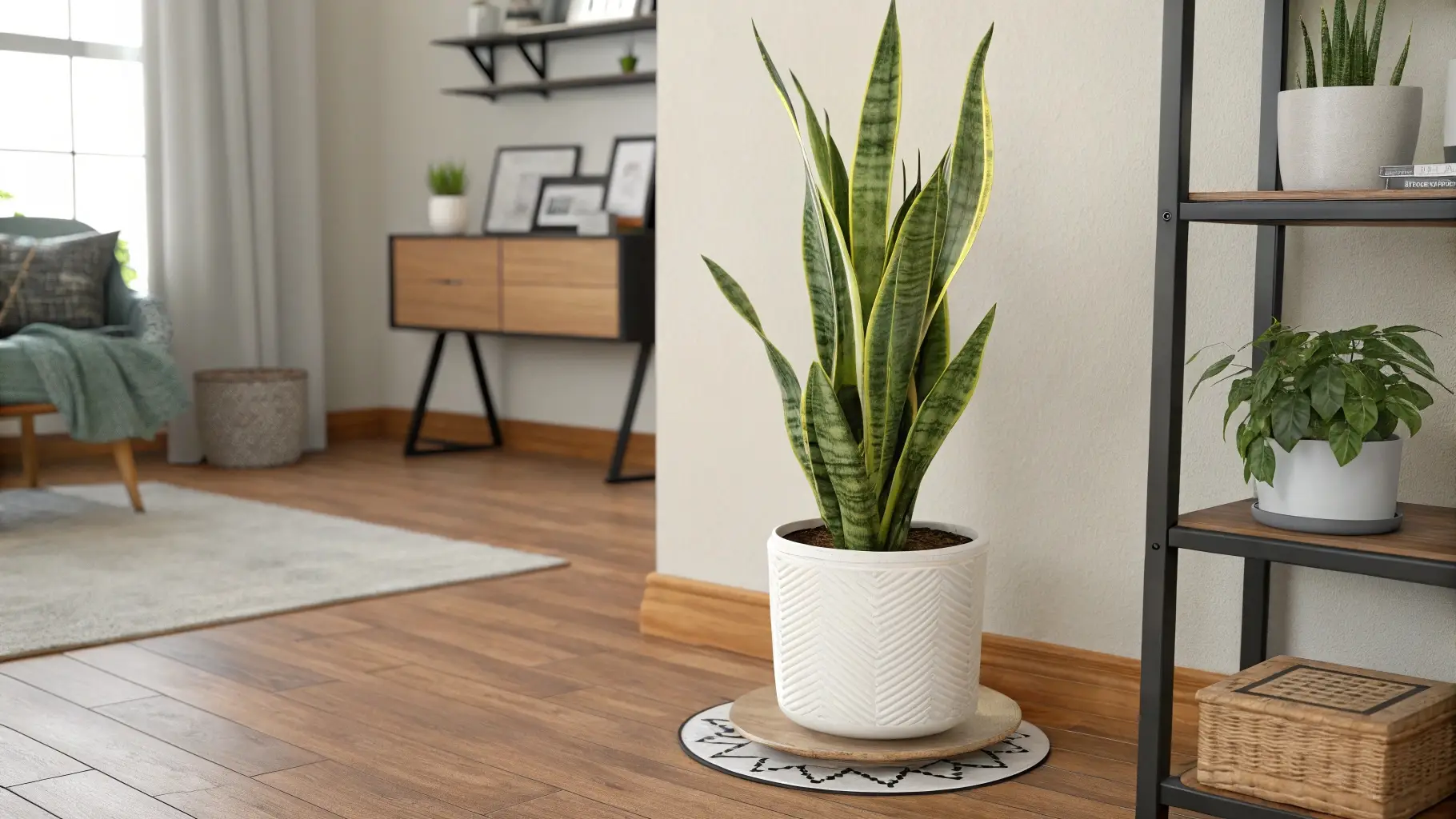
This plant handles serious cold. Down to 45°F (7°C) without complaining. Those upright, architectural leaves stay strong even when your room feels like a refrigerator.
The ‘Moonshine’ variety is particularly hot right now. But honestly? All snake plants are winners. They’re easy care houseplants that forgive neglect. Forgot to water for a month? No problem.
Here’s a bonus feature. Snake plants clean your air. They absorb nasty stuff like formaldehyde, benzene, and xylene. You get a tough plant and cleaner air. Win-win.
Light is forgiving. Five to eight hours of indirect light is ideal. But these plants tolerate low light because they have a slow metabolism. They’re efficient.
Care couldn’t be easier. Water only when the soil is completely dry. Feed once a year in spring. That’s the whole routine.
One warning: Keep your snake plant away from cold drafts. It handles cold rooms but doesn’t like sudden blasts of icy air hitting its leaves directly.
The snake plant delivers style and substance. It’s air purifying and tough. If you want snake plant care to be simple, you’re in luck. This plant practically takes care of itself.
4. Spider Plant (Chlorophytum comosum)

Spider plants handle temperatures down to 40°F (4°C) without breaking a sweat. But here’s the catch: they hate cold drafts. Keep them away from drafty windows or doors, and they’ll be perfectly happy in your cool room.
What makes spider plants special? They grow baby plants on long stems. These “babies” dangle down like spiders on silk (that’s where the name comes from). You can snip these babies off and plant them to grow a whole family of spider plants in just a few months.
The smaller trailing leaves fit perfectly with 2025’s houseplant trends. People love how they cascade from shelves and hanging baskets.
Care is simple. Give them bright indirect light and water when the top inch of soil feels dry. One tip: avoid tap water if it contains fluoride, which can turn leaf tips brown. Use filtered water instead.
Got pets? Great news. Spider plants are completely safe for cats and dogs. Your furry friends can nibble without any worries (though try to discourage it anyway).
5. English Ivy (Hedera helix)
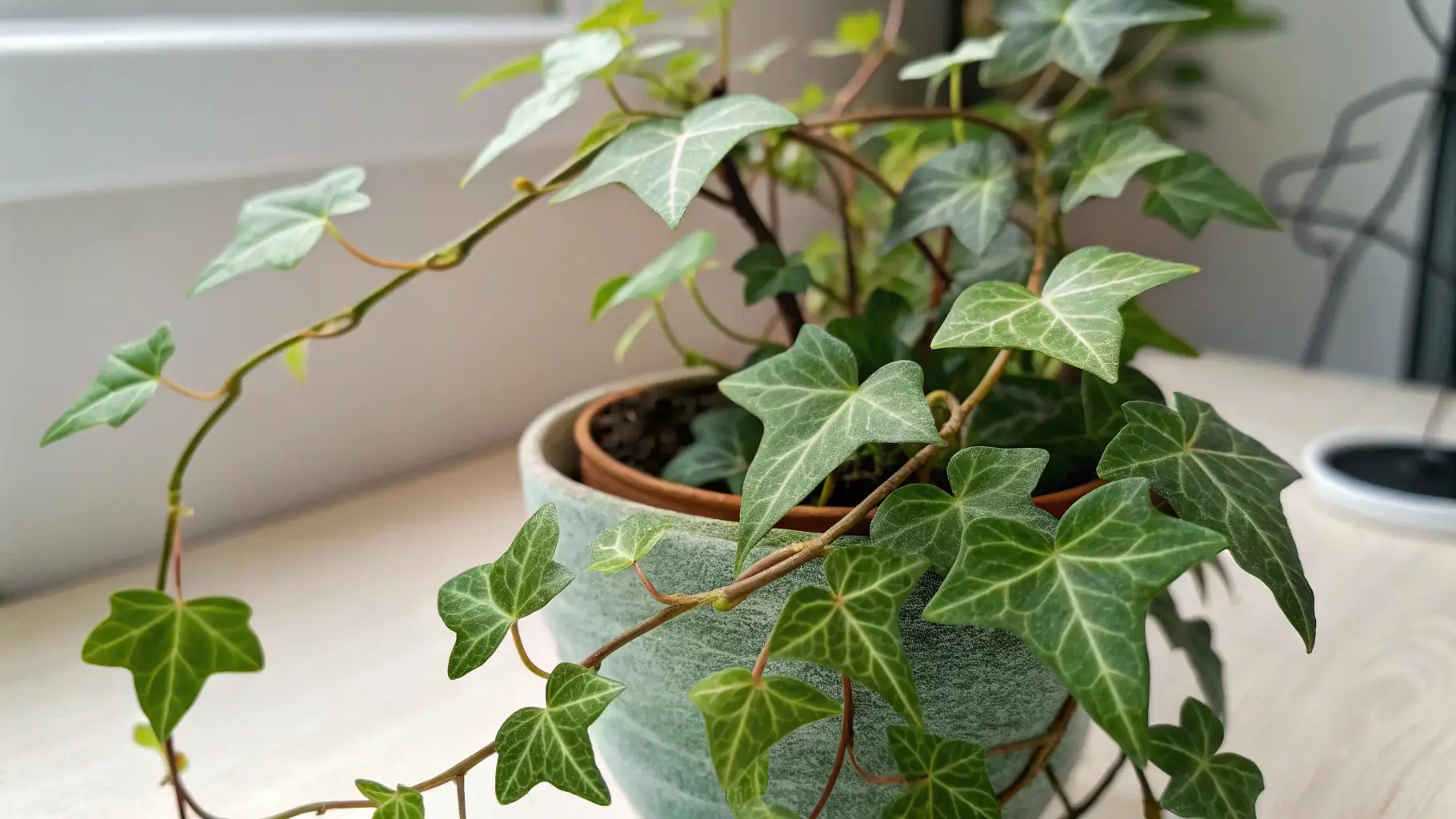
This trailing beauty works perfectly for hanging baskets or shelves. Let it cascade down for a classic look, or train it to climb up a trellis. Your choice.
Here’s what ivy needs: humidity. Even though it loves cool temperatures, it still wants moisture in the air. Mist it occasionally or give it a gentle shower every few weeks. This also washes dust off the leaves and keeps them looking fresh.
English Ivy is having a moment right now. The 2025 houseplant trends favor smaller-leafed trailing plants, and ivy fits the bill perfectly.
Light requirements are flexible. Ivy grows well in part sun to shade, which makes it perfect for those darker corners of your home. Just keep it out of direct sunlight, especially during warmer months when the sun gets stronger.
Use well-draining soil and water regularly, but don’t let the roots sit in water. Ivy doesn’t like wet feet. Keep the humidity up with regular misting, and your ivy will reward you with beautiful cascading growth that gets better every year.
6. Japanese Aralia (Fatsia japonica)
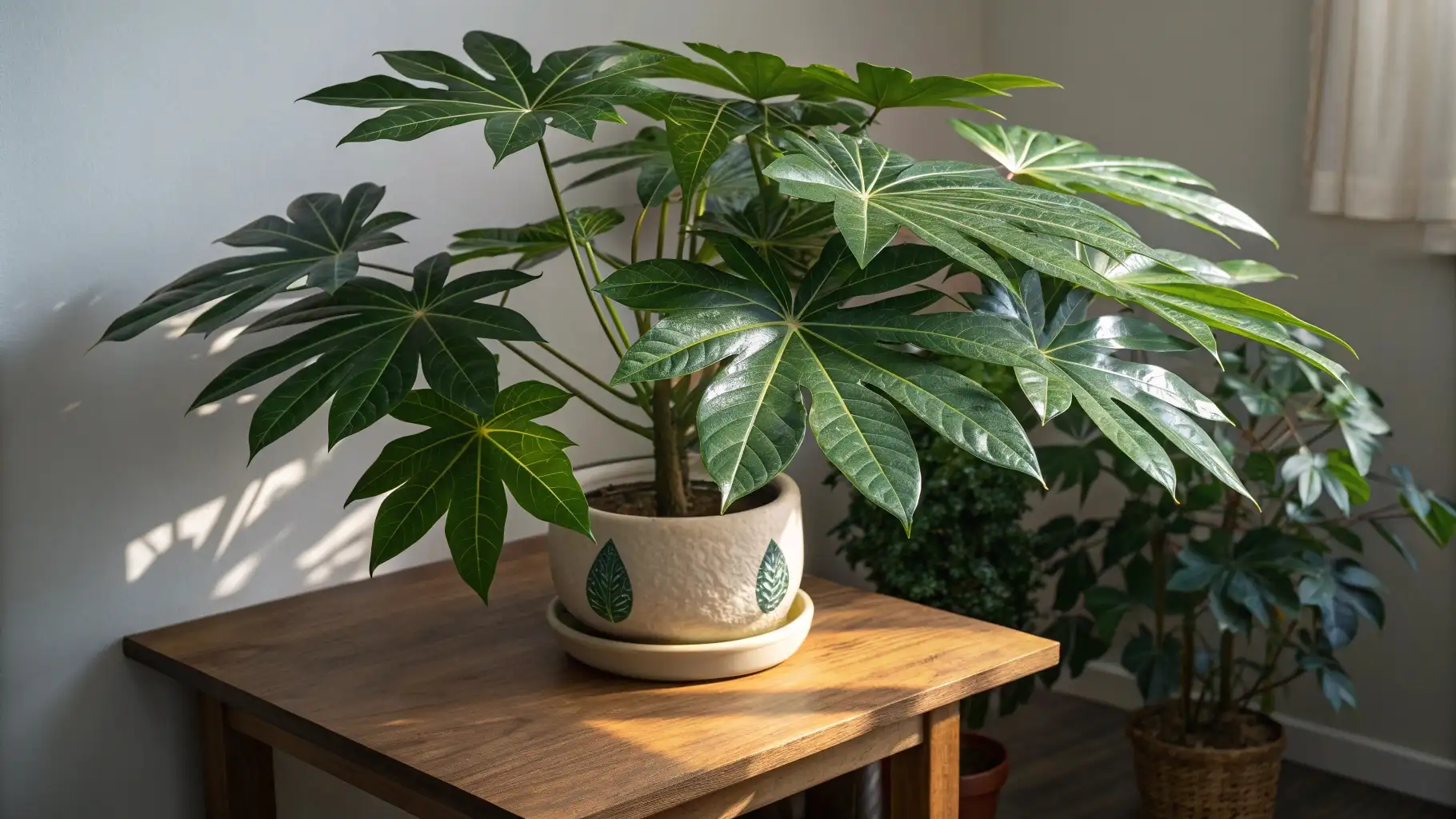
This plant comes from Japan, where temperatures swing to extremes. It can handle outdoor temperatures down to -10°C in UK gardens. Indoors, it’s perfectly happy between 15-21°C and won’t complain about occasional drops to 10°C.
Japanese Aralia grows 6-10 feet tall outdoors (hardy to USDA zones 8-10), but stays more manageable inside your home. The large leaves create an instant focal point in any room.
Here’s something cool: it blooms in fall and produces dark berries in winter. You get year-round interest from one plant.
But there’s a quirk. Japanese Aralia is tough in cold but gets fussy when it’s hot. Watch for drafts from heating vents, and be careful not to overwater when temperatures drop. Cold plants need less water than warm ones.
Give it well-draining acidic soil and partial shade or indirect light. The ideal temperature sits between 60-70°F, but this plant can handle colder without problems.
Japanese Aralia works great if you want to transition plants between indoor and outdoor spaces. Just acclimate it slowly to prevent shock.
7. Norfolk Island Pine (Araucaria heterophylla)
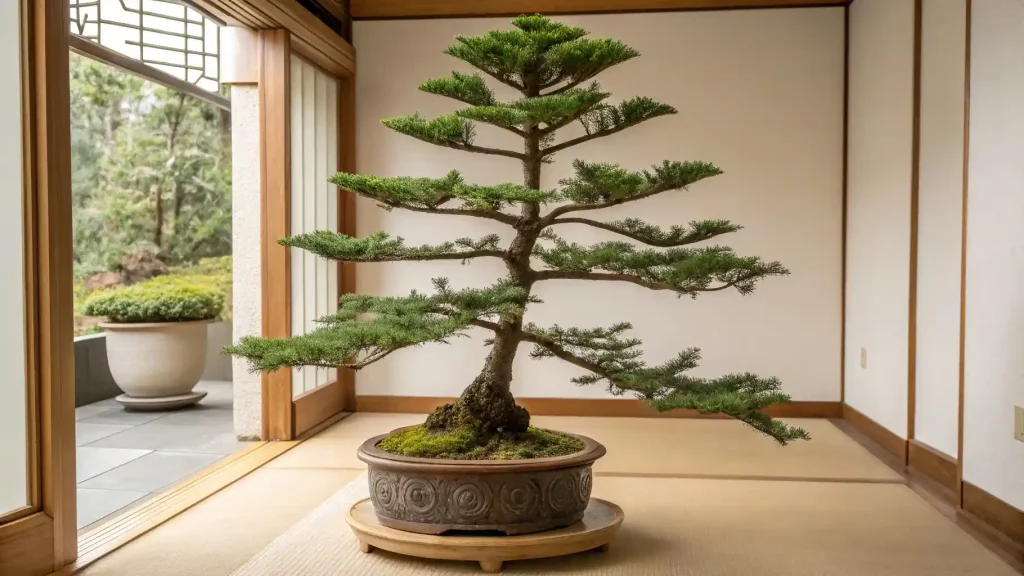
And that’s exactly why people love it. The tree-like shape brings instant winter charm to any room. It fits perfectly with the Scandinavian minimalist style that’s everywhere in 2025.
Norfolk Island Pine prefers temperatures between 60-70°F with at least 6 hours of bright, indirect sunlight daily. But here’s the good news for cold rooms: it can handle occasional drops to 5°C (41°F) during winter months. The ideal winter range sits between 10-15°C (50-59°F).
The key is consistency. This plant hates temperature swings. Pick a spot and leave it there. Moving it between warm and cold areas will stress it out.
For soil, use a moist, sandy, well-draining mix. Water regularly to keep it consistently moist (not soaking wet). During winter, it needs less water than in summer.
Light is crucial. Without those 6+ hours of bright indirect light, your Norfolk Island Pine will get leggy and lose its compact Christmas tree shape.
Think of this as your year-round holiday decoration. It brings festive vibes to cold rooms without any of the fuss of real evergreens.
8. Christmas Cactus (Schlumbergera)
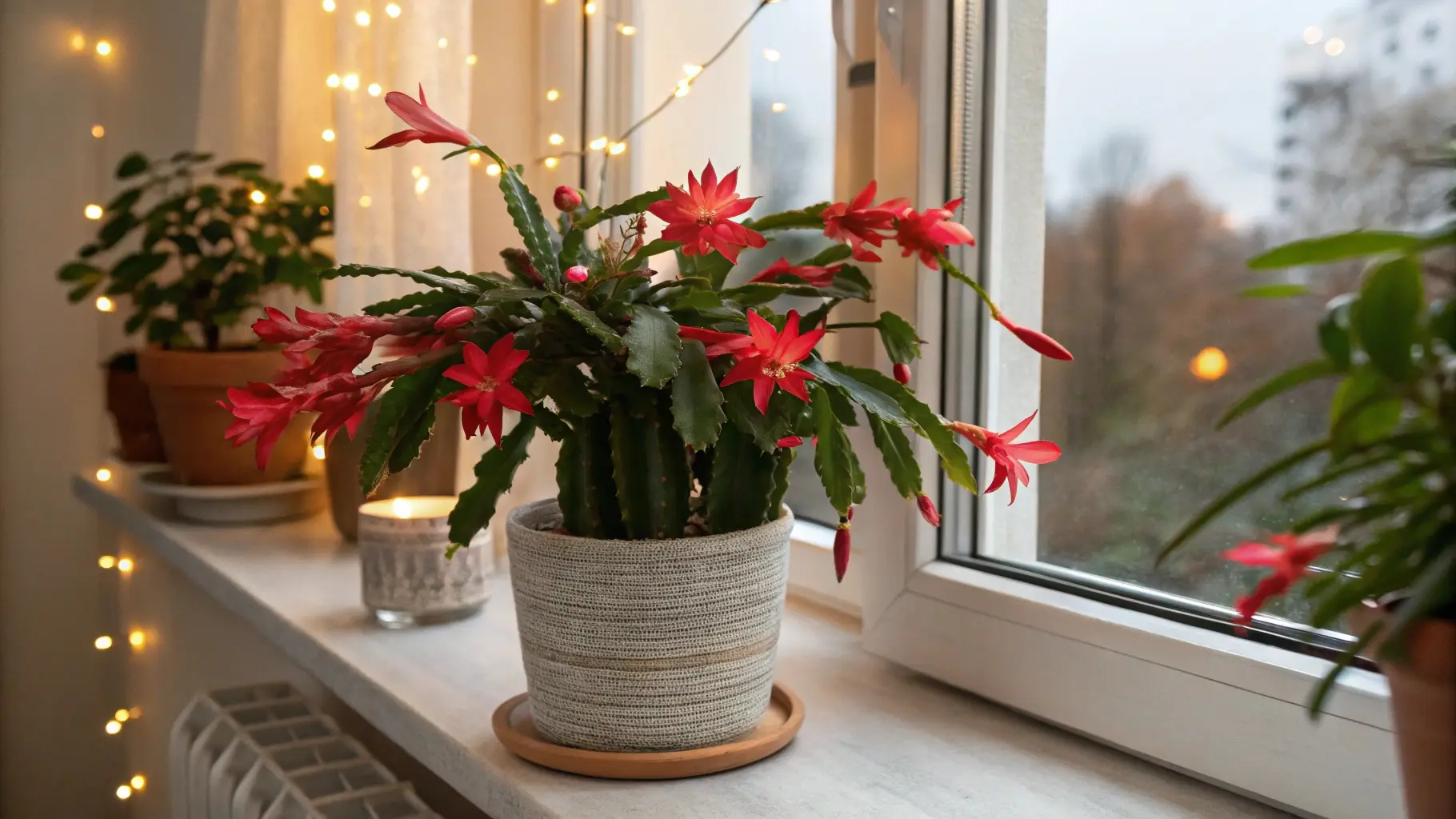
Here’s something cool: this plant actually needs cold weather to bloom. Most houseplants hate the cold. But Christmas Cactus tolerates temperatures down to 50°F (10°C) without any fuss.
Around October, when temperatures start dropping, your plant notices. It begins forming buds that open right in time for the holidays. That’s why it earned its festive name.
The blooms are stunning. Think jewel-toned pink or purple flowers that look like tiny orchids. They appear in winter when everything else looks dull and gray.
Despite those tropical-looking flowers, this is one tough plant. It thrives on neglect and handles problems that would kill other houseplants. Native to Brazilian jungles where temperatures can drop at night, it’s naturally adapted to temperature swings.
Care is simple: Give it indirect light and well-draining soil. Water only when the soil feels dry. It likes a bit of humidity, so your bathroom works great.
Want holiday blooms? Here’s the secret: let it experience cooler temps (around 50-55°F) in fall. Give it less water and shorter days. In about six weeks, you’ll see buds forming. Then enjoy your living holiday decoration that comes back year after year.
9. Jade Plant (Crassula ovata)
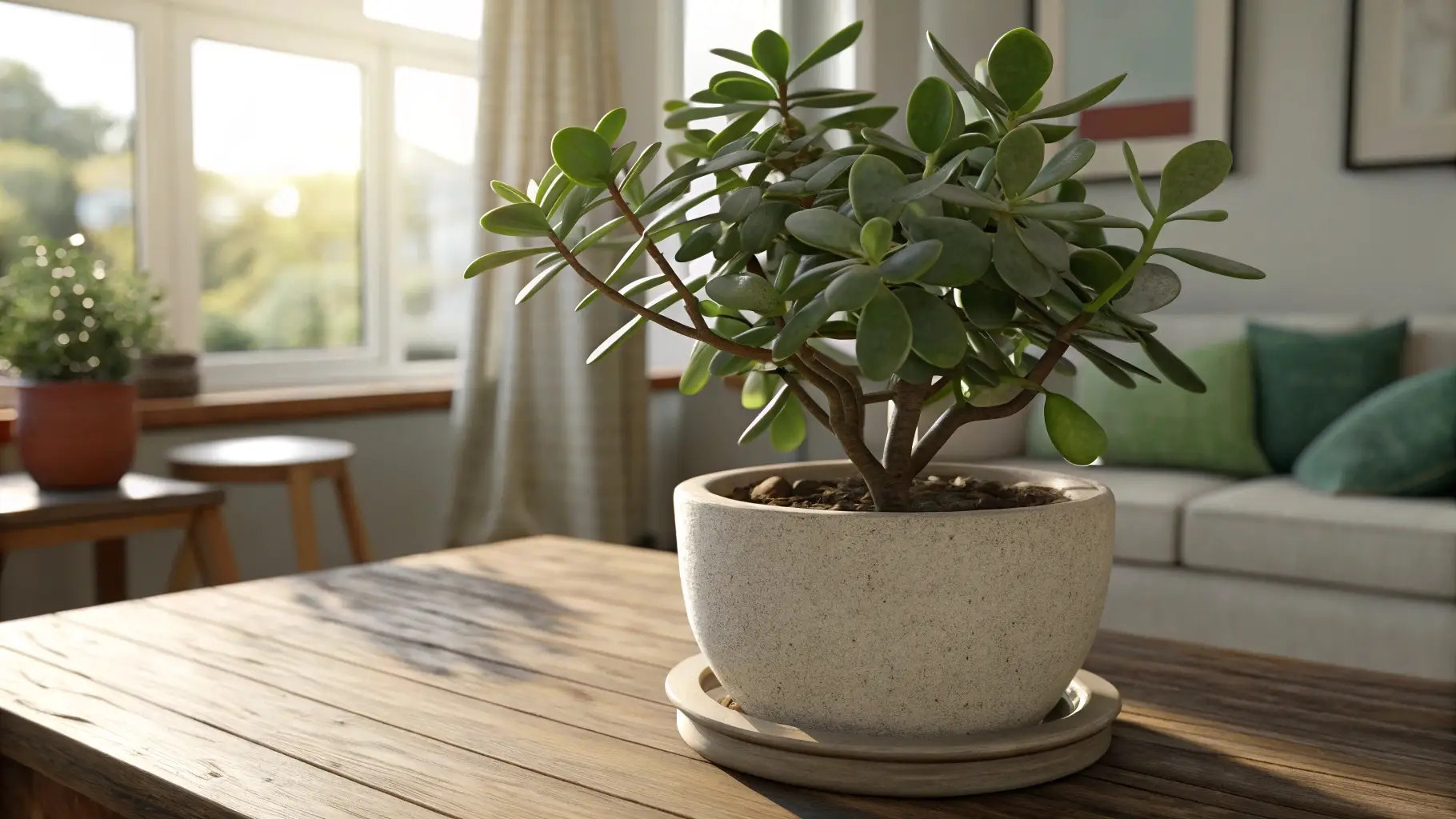
You can forget to water this plant for weeks. It won’t die. You can let your room get close to freezing. It still survives.
Jade plants tolerate temperatures down to 32°F (0°C). That’s literally freezing. They’re desert natives that experience cold nights naturally, so they’re built for temperature extremes.
Those thick, fleshy leaves aren’t just for looks. They store water like tiny reservoirs. This means you can water infrequently without guilt. In fact, overwatering kills more jade plants than underwatering ever will.
As your jade plant ages, something magical happens. It develops woody stems and starts looking like a miniature tree. Some people keep jade plants for decades, watching them transform into living sculptures.
Here’s what makes it bulletproof: It handles hot air from heaters. It handles cold air from drafty windows. It tolerates less-than-perfect growing conditions without complaining.
Care basics: Bright light works best. Use well-draining soil (cactus mix is perfect). Water only when the top inch of soil feels completely dry. Touch it with your finger to check.
10. Philodendron (Various species)
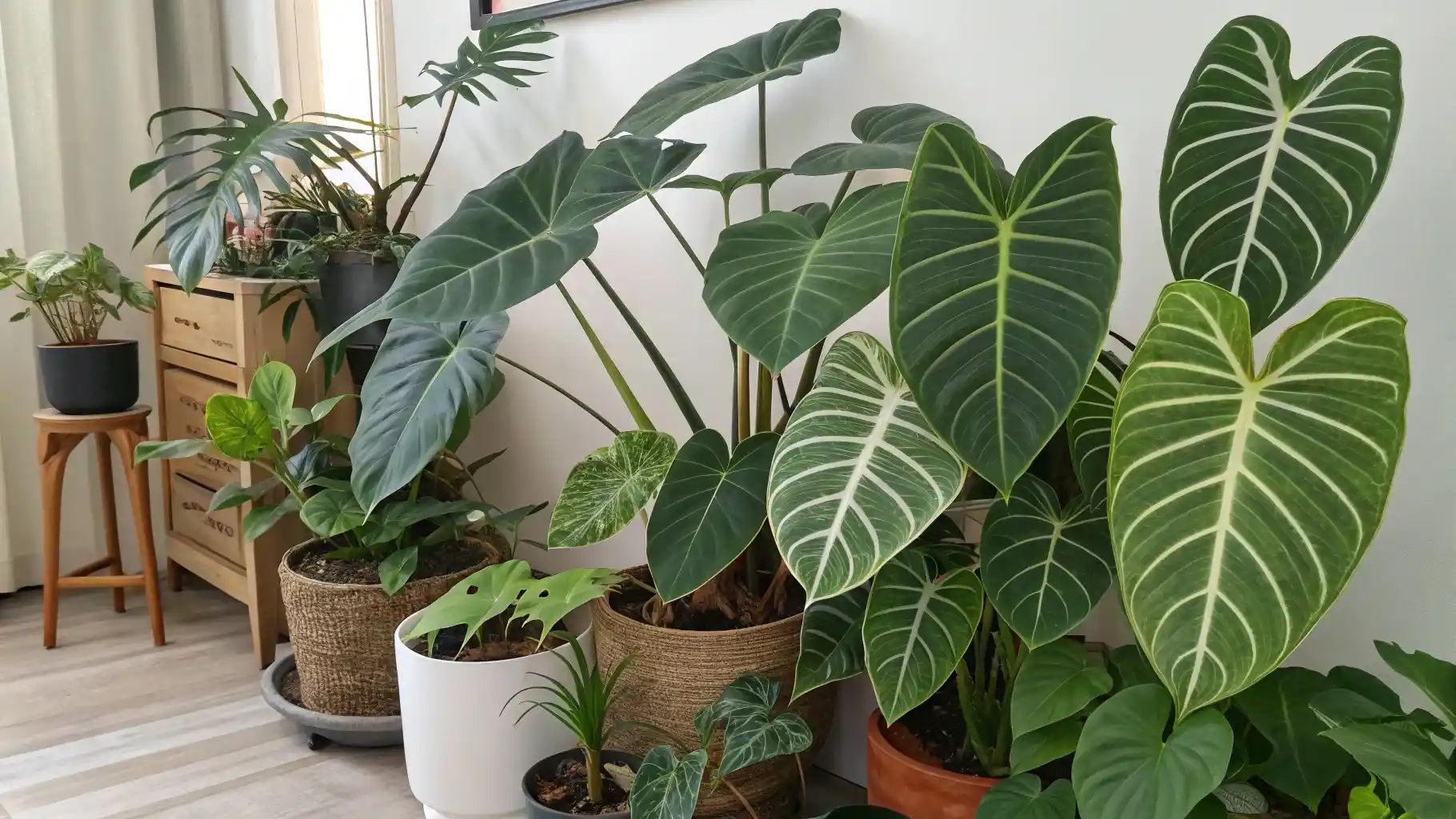
Philodendrons are having a moment right now. Younger gardeners especially love their bold, dramatic leaves. And 2025 trend reports list them as must-have statement plants.
But forget the trends for a second. These plants are popular because they’re nearly impossible to kill.
They tolerate cold down to 50°F (10°C). They handle shady corners where other plants sulk. They survive drought conditions. If you forget to water for a while, they bounce back without holding a grudge.
There are over 400 species to choose from. Some have heart-shaped leaves. Others feature dramatic split leaves that look like they belong in a jungle. Pick whatever style matches your space.
Why they work in cold rooms: Philodendrons evolved in forest understories where conditions change constantly. They adapted to survive whatever nature throws at them. That makes them perfect for drafty apartments or rooms without great heating.
Simple care: Give them indirect light (bright or low both work). Plant in well-draining soil. Water every two weeks, or when the soil feels dry an inch down. Don’t let them sit in standing water.
Need a big plant that looks expensive but acts easygoing? This is your answer.
11. Rubber Plant (Ficus elastica)

Those big, glossy leaves make a statement. A rubber plant fills empty corners and makes rooms look designed. But unlike many dramatic-looking plants, this one doesn’t demand constant attention.
Rubber plants tolerate cold spaces temporarily, handling temperatures down to 50°F (10°C). The key word is temporarily. They can handle a cold spell, especially if you adjust your care.
Cold weather tip: When temperatures drop, reduce watering significantly. Damp soil plus cold air equals root rot. Let the soil dry out more between waterings during winter months.
The leaves come in dark green or burgundy. Both varieties have a leathery texture that looks almost artificial. They’re also natural air purifiers, removing toxins from your space while looking good doing it.
These plants can grow quite large indoors. If you want a tree-sized houseplant that doesn’t need a greenhouse, this delivers. Wipe the leaves with a damp cloth every few weeks to keep them shiny and help the plant breathe.
Basic care: Bright indirect light works best. Use well-draining soil. Water less in cold weather. Avoid overwatering year-round.

